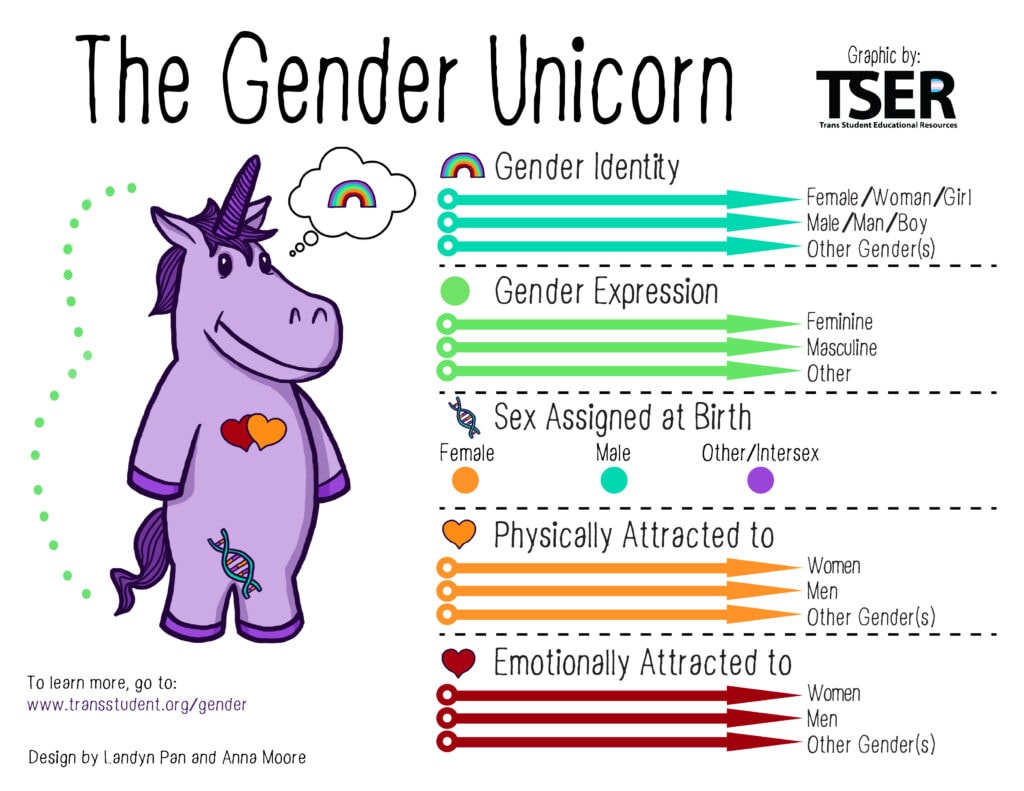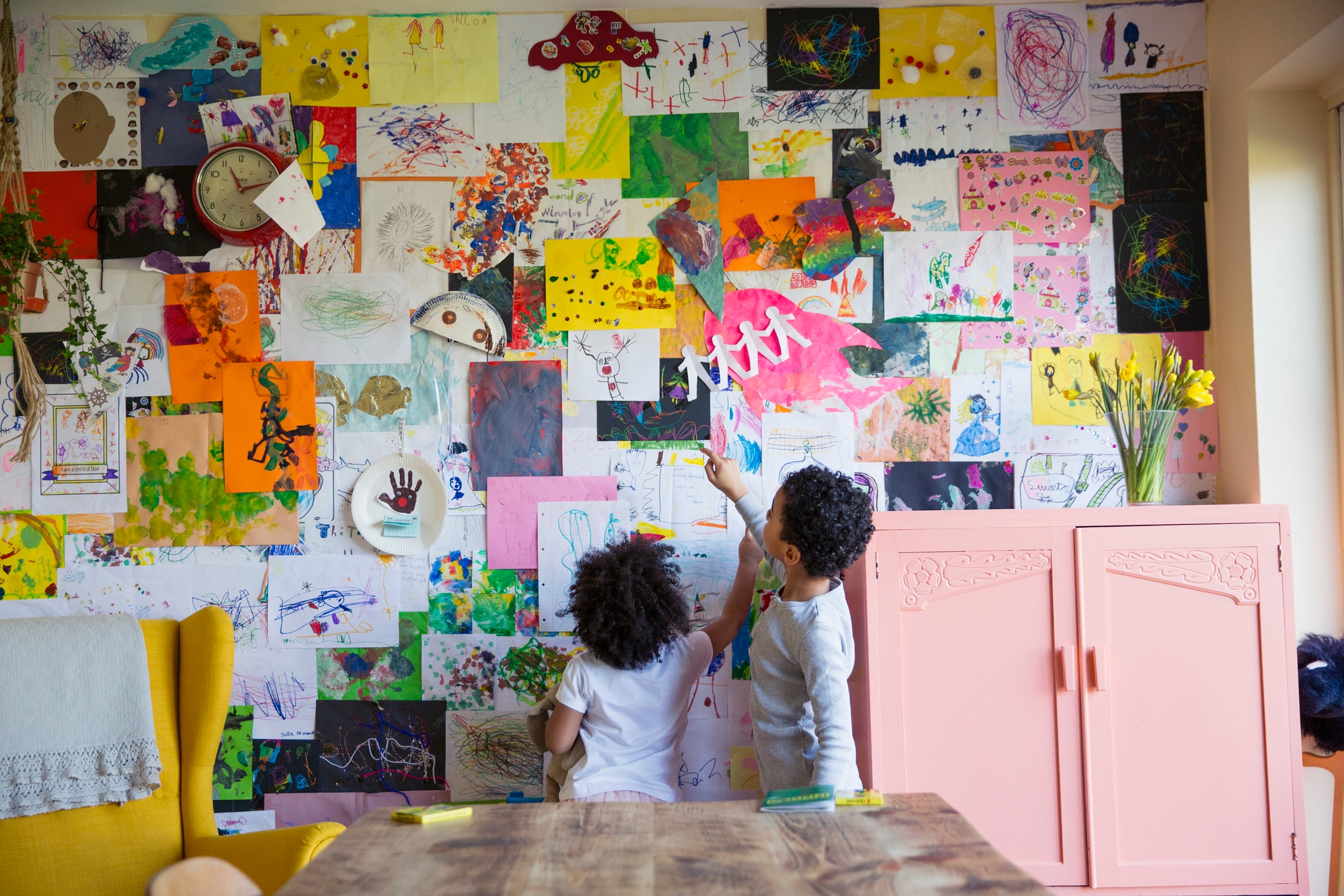In this article
When many of us adults were growing up, society imposed stricter expectations around gender roles, from how we were ‘supposed’ to behave and dress to what career paths were ‘appropriate.’ Over time, even as many of these so-called ‘norms’ have faded away, parents may still feel concerned if their daughter dresses “like a boy” or vice versa. But there’s no rulebook, experts say, and it’s normal and healthy for kids to experiment with self-expression.
“One important point to make here is that all clothing is for all people, inclusive of gender and sex assigned at birth,” says Samantha Pflum, a clinical child psychologist at UNC Chapel Hill School of Medicine. “We often receive external social and cultural cues that encourage us to separate ‘boy clothes’ from ‘girl clothes,’ but this is a limited and binary view that can suppress our creativity and flexibility with self-expression,” she explains.
“We often receive external social and cultural cues that encourage us to separate ‘boy clothes’ from ‘girl clothes,’ but this is a limited and binary view that can suppress our creativity and flexibility with self-expression.”
— Samantha Pflum, clinical child psychologist
Key takeaways
- Kids may explore clothing or styles that don’t align with traditional gender norms — this is a healthy, normal part of self-expression and doesn’t necessarily reflect their gender identity.
- Dressing in stereotypically “boy” or “girl” clothing isn’t a signal of a kid’s gender identity on its own. Experts caution against making assumptions based on clothing choices alone.
- Supporting kids and letting them choose what feels comfortable and authentic helps build confidence and emotional health. For LGBTQ+ youth, parental acceptance is a major protective factor.
- Keeping communication open communication and talking with kids about their preferences in a nonjudgmental, curious way fosters trust — and helps parents understand whether a child is simply exploring or navigating deeper identity questions.
What’s the difference: gender identity vs. gender expression?
First, a quick explainer: when Pflum says ‘sex assigned at birth,’ this indicates how someone is identified as a baby based on physical characteristics. However, as this person matures, they may internally identify with a different gender. And how they outwardly express themselves is a separate piece of their identity.
“Gender expression is the term we use to describe how one expresses themselves in a way that fits with our cultural norms of gender,” says Juanita Hodax, a pediatric endocrinologist and co-director of Seattle Children’s Gender Clinic. “We often think of ‘boy clothes’ or ‘girl hairstyles’ — it simplifies it, but gender expression can be how someone chooses to express themselves in that context.”
Gender identity, on the other hand, is how someone internally identifies, like male, female or nonbinary. Their gender expression may clearly align with their gender identity, but it might not.
This popular Gender Unicorn graphic from Trans Student Educational Resources offers a helpful way to visualize these distinctive aspects of gender.

When kids begin to see gender differences
Kids learn these concepts younger than you may realize. Hodax says by around age 3 or 4, most children start to understand that boys and girls’ bodies are different. They start pointing out different genders in books or toys, and they may even articulate that they feel more like a boy or girl, she explains.
Once children start attending formal school, they often form stronger preferences for types of dress or self-expression, Pflum adds. “At or after age 5, we often see kids begin to develop more of an understanding of gender, including ways that gender identity and expression are fluid and flexible,” she adds.
It’s important to know that all of these concepts are separate from sexual orientation, or who you’re emotionally or physically attracted to. While clothing choices can be influenced by that — for example, there’s a stereotype of lesbians dressing more masculine — that’s typically not at play for young kids, Hodax explains. She says children often don’t experience attraction until later, well after they gain a sense of gender identity.
Why exploration is natural and healthy
It’s helpful to remember that young children haven’t yet absorbed society’s gender norms. “For younger kids, it’s very common to explore different gender expressions,” Hodax says. “A lot of kids do this during dress-up play or pretend play. It may mean that they’re exploring their gender identity as well, but a lot of times, they’re just exploring expression and seeing how these different things feel.”
“For younger kids, it’s very common to explore different gender expressions. A lot of kids do this during dress-up play or pretend play. It may mean that they’re exploring their gender identity as well, but a lot of times, they’re just exploring expression and seeing how these different things feel.”
— Juanita Hodax, pediatric endocrinologist
Is it OK for a girl to wear boy clothes?
Pflum urges parents to understand that what some consider ‘girls in boy clothes’ isn’t pathological, but a normal form of self-expression. “Children are often wonderfully creative and fun with their dress and other forms of self-expression,” Pflum says.
She adds that kids dressing in certain clothes could be communicating messagings unrelated to gender — for example, they may simply like the colors, textures or design.
Why you can’t make assumptions based on a child’s clothing choices
Exploration with clothing or style may or may not mean any number of things, says Pflum.
If a child is only wearing specific clothes during playtime or certain times, Hodax says, it can mean something different from someone who wants that gender expression all the time or wants a more permanent change like a haircut.
If someone who’s assigned female at birth (AFAB) dresses in stereotypically masculine clothes, Hodax explains, “it may just be how they express themselves, but that doesn’t necessarily mean it also aligns with what their gender identity is.” In other words, just because she dresses in a way that’s perceived more like a boy doesn’t mean she identifies as a boy.
“AFAB children who dress in ‘masculine’ ways may grow up to identify as transgender, gender nonbinary or queer, but this is not something that can be inferred from dress alone,” Pflum notes.
For some kids, however, it could eventually indicate deeper gender identity exploration. “When children are expressing a gender identity different from their sex assigned at birth, we often look for whether they are insistent, consistent and persistent in this expression,” Pflum says. This may be apparent if a child constantly talks about feeling uncomfortable or distressed by the appearance of their body or how their gender is perceived by others, she adds.
“When children are expressing a gender identity different from their sex assigned at birth, we often look for whether they are insistent, consistent and persistent in this expression.”
— Samantha Pflum, clinical child psychologist
It could also mean, for some people, that they’re questioning their gender identity. It’s highly personal, so it’s key to not make assumptions.
Why parental support is critical
As a parent, your job is simple: support your child as they explore all aspects of their identity. “We know that support from parents and families can make such a big difference in the health and well-being of kids,” Hodax says.
“For example, letting our kids choose whatever clothes make them more comfortable, whether those are clothes we think of as being associated with boys or girls — they’re just clothes.” Hodax suggests rather than pointing out that clothes are for a different gender, focus on what makes kids feel happy and most like themselves.
Pflum says it’s also crucial that parents avoid forcing children to wear clothes that don’t feel comfortable or authentic to them. For example, she says, a girl forced to wear a dress against her will may express discomfort, sadness and frustration.
“Children are so much more than their clothing — they are smart, perceptive, creative and kind,” Pflum says. “Perhaps empowering this child to choose her own clothing for an event will enable her personality to shine even more!”
“Children are so much more than their clothing — they are smart, perceptive, creative and kind.”
— Samantha Pflum, clinical child psychologist
Keep lines of communication open
As your child explores, don’t be afraid to talk about it. “I always encourage parents to keep an open dialogue with their children to learn about all of the different ways they express themselves, inclusive of clothing, hair, interests and speech,” Pflum says.
Hodax says this can also help your child communicate. “A lot of times, kids may struggle to find the words to describe why they’re choosing things, and a parent may not know if the child just likes certain things about the clothes or because they’re exploring their gender identity,” she explains. “By asking and talking about it in a supportive way, it can open up the conversation and give the kid space to talk about their thought process.” For example, she says: “Yes, of course, you can wear this outfit. Can you tell me why you like this one instead of your other outfits?”
If it becomes apparent that your child isn’t just exploring or practicing gender expression, and they’re struggling with gender identity or sexual orientation, your support is crucial — and could be lifesaving. According to The Trevor Project, LGBTQ+ youth are 40% less likely to attempt suicide if they have at least one accepting adult in their life.
Hodax encourages concerned parents to reach out to their pediatrician or primary care provider. They may suggest counseling, or if the child has reached puberty and is struggling with gender identity, to visit a gender clinic like hers.
Regardless of what’s driving your child’s outfit choices, experts say the best move as a parent is to try to unlearn society’s gender norms and support your child’s uniqueness. According to Pflum, “Making space for children to express themselves through dress, name, pronouns and mannerisms can communicate that all of their identities are welcomed and accepted.”





